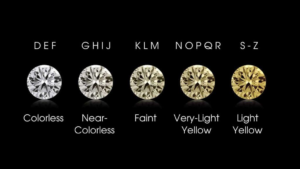A diamond goes through a lot of hands before coming to you which decides its high cost. But why do Lab Grown Diamonds are cost-effective compared to mined diamonds? Here in this blog, we will discuss why there is a difference in the cost of Diamonds and how it is decided.
Let’s talk about Natural Diamonds first.
It can take between 1 and 3.3 billion years for diamonds to form in nature. The chemical reaction occurs when carbon atoms, miles deep on the surface of the earth, begin to crystallize due to the intense heat and pressure generated beneath the crust. The rocks are then brought to the surface by an eruption that points the ash upwards. The long process and effort required to mine diamonds are responsible for the high price of stones, but the technique has created a more cost-effective way to produce the coveted stones.
Natural Diamonds are rare and take a longer time to appear aesthetic in our hands henceforth it decides their price accordingly.
Now let’s talk about Lab Grown Diamonds.
As per its name, Lab Grown Diamonds are formed by scientists mirroring the same process as mined diamonds that are above the ground.
Laboratory-grown diamonds are just as authentic and contain exactly the same properties as those formed underground. The only distinction between lab-grown diamonds and mined diamonds is their origin. Lab-made diamonds are cheaper because they are less touched than the mining process. Lab Grown diamonds are 40 to 60 percent cheaper than mined diamonds.
Likewise, natural diamonds Lab Grown diamonds’ prices also fluctuate as the situations unfold. A 2-carat lab-created diamond might cost around $10,000 vs. $22,000 for a mined diamond.
Parameters that decide the price of Lab Grown Diamonds
The prices of Lab Grown Diamonds are decided on similar factors as natural diamonds.
Shape: The most popular diamond shape is rounded, vibrant, and the most expensive. This is because round-cut diamonds provide the most brilliance. After that, oval cuts and Asscher cuts are the second most expensive.
Cuts: Diamond cuts affect their beauty above all else. Perfect or good cut diamonds are better and more expensive than “good” or “very good” cut diamonds.
Carat weight: The weight of the diamond. Example: B. 1 or 2 carats, will affect the price. The heavier the stone, the more it usually costs.

Color: Lab-produced diamonds are graded by IGI on a D to Z scale. D-colored diamonds are colorless, while Z-colored diamonds have an impressive yellow or brown tint. Better color-grade diamonds are more expensive, but the differences are not always noticeable. For this reason, it looks colorless to the naked eye, but it is much cheaper than diamonds in D, E, and F colors, so it is advisable to look for diamonds in the GJ range.
Transparency: When talking about the transparency of a diamond, it refers to how clean the imperfections and inclusions are. Diamonds without inclusions are more expensive than diamonds with noticeable defects. VS1 and VS2 diamonds have clean eyes but are much cheaper than FL or VVS diamonds, so it’s a good idea to look for them.
Certification: The certification itself does not raise or lower the price of the diamond, but confirms what you are paying for. IGI certificates are recommended for lab-made diamonds. IGI provides the most comprehensive and reliable grading for laboratory-made diamonds. By choosing an IGI certificate, you can be sure that the diamond you receive is exactly what the seller says.
We at Maitri Lab Grown Diamonds provide all these certifications and other parameters to our customers. This shows transparency and trust between u and our customers. Clear all your queries and get your desired Lab Grown Diamond from Maitri Lab Grown Diamonds. Signup here.